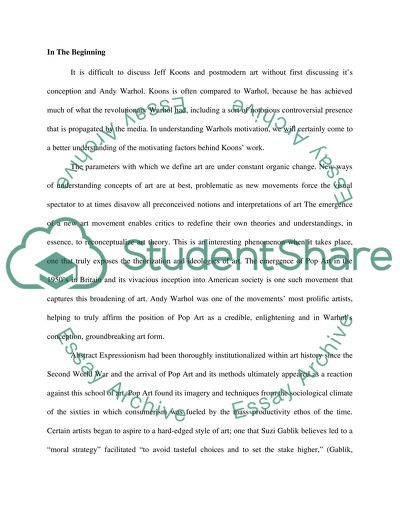Cite this document
(“Postmodern Art Essay Example | Topics and Well Written Essays - 3750 words”, n.d.)
Retrieved from https://studentshare.org/visual-arts-film-studies/1512092-postmodern-art
Retrieved from https://studentshare.org/visual-arts-film-studies/1512092-postmodern-art
(Postmodern Art Essay Example | Topics and Well Written Essays - 3750 Words)
https://studentshare.org/visual-arts-film-studies/1512092-postmodern-art.
https://studentshare.org/visual-arts-film-studies/1512092-postmodern-art.
“Postmodern Art Essay Example | Topics and Well Written Essays - 3750 Words”, n.d. https://studentshare.org/visual-arts-film-studies/1512092-postmodern-art.


